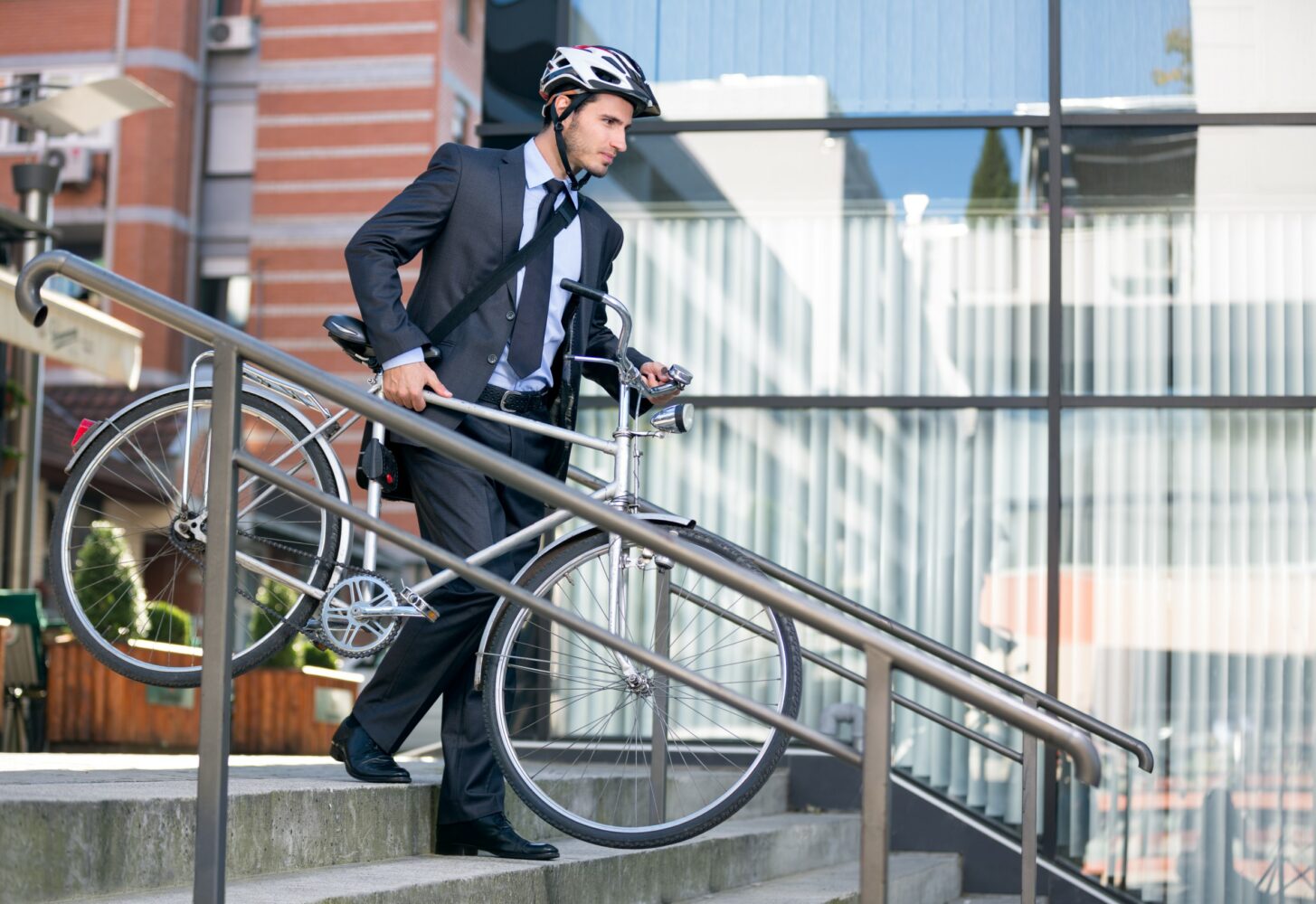
With a taxicab yellow paint job, an oversized metal frame and big, knobby tires that elevate its rider higher than traditional road bikes, Jeff Hildebrand’s ebike is hard to miss. As he maneuvers through the concrete and steel canyons of downtown Tucson, his top priority is riding safely and efficiently.
Hildebrand is one of a handful of Pima Association of Governments’ (PAG) employees who bicycle to downtown offices. Their commute experiences are similar to many who cycle in the region. PAG oversees a regional Travel Reduction Program, which encourages employees to drive less and use alternative methods of transportation such as cycling.
Hildebrand does more than rely on bright colors to stay safe. In addition to wearing a bike helmet and obeying safety rules, he uses Google Maps and PAG’s Tucson Bikeways map to help plan his route to work.
“I recommend looking for routes that avoid some of the busier intersections even if it may be a little further or take a little bit longer,” said Hildebrand, PAG’s Computer Systems Administrator.
Although he can use technology to avoid traffic issues or wrecks, nothing replaces old-fashioned awareness to keep one safe on their ride. “I recommend riding defensively, pretty much planning on what to do as if every car is about to pull in front of you,” Hildebrand added.
PAG’s Air Quality Manager Dustin Fitzpatrick puts his money where his mouth is by commuting by bike as well.
Understanding the impacts of vehicle emissions, Fitzpatrick finds cycling a convenient way to support clean air by getting just one vehicle off the road. Plus, cycling is a terrific way to exercise and save money on car-related costs such as gasoline and parking.
Like Hildebrand, Fitzpatrick believes planning a route is important and finding one that is safe and convenient is key. “To maximize safety, I stay off main roads as much as possible, wear a yellow-colored top and helmet, and use front and rear lights even during the daytime,” he said.
Being able to avoid backed up traffic makes cycling a great option. “I find that my bike commute time is the same as driving and parking, and probably even quicker since I got an e-bike last year,” Fitzpatrick noted.
Combining transit with your bike commute can keep travel time reasonable and achievable. Local buses and the streetcar allow bike transport for a smoother commute. Both of these alternative transportation methods benefit air quality and can reduce stress. Cycling to a bus stop is also a good way to use transit without having to find a safe place to park a car.
“I could hop on the express bus from Marana and take it straight to downtown in the morning, then ride my bike home,” said David Mitchell, PAG’s senior transportation planner “This allows me to arrive to work without being sweaty or in exercise clothes, and I can count on getting to work at a certain time.”
Planning Coordinator Hannah Oden is one of PAG’s newest employees. She chose the organization, in part, due to her ability to ride her bicycle to work. Careful planning is a part of her commute. In addition to the route and safety precautions, Oden says planning for weather is important.
Here are some resources that can help you prepare for cycling to work.
- Pima County’s Bicycle and Pedestrian pages have maps, videos and information on cycling safety classes.
- The city of Tucson has useful pedestrian, cyclist, and motorist safety tips.
- Learn how PAG supports alternative modes of transportation to provide accessibility and mobility for all.
- Need convincing: find more reasons why you might consider trying active transportation.
- Find out how you can combine cycling and transit to make your commute work for you.
- PAG also has some comprehensive safety tips for cyclists, pedestrians and motorists.
- Take PAG’s transportation safety pledge and make a difference in our community whether you are a pedestrian, bicyclist, driver, or all three.
For those hot days, a hygiene kit and spare clothes are a must. Monsoon season provides a different challenge. The weather in southern Arizona can be fickle. Even looking at weather reports only in the a.m. can leave us surprised in the afternoon. Oden advises to pack some rain gear for monsoons, and it can’t hurt to have a back-up option in case of too much rain.
“There is no shame being a fair-weather commuter,” Oden noted.
While cycling may not be in the cards for you, remember to be on the lookout for cyclists and give them space.

